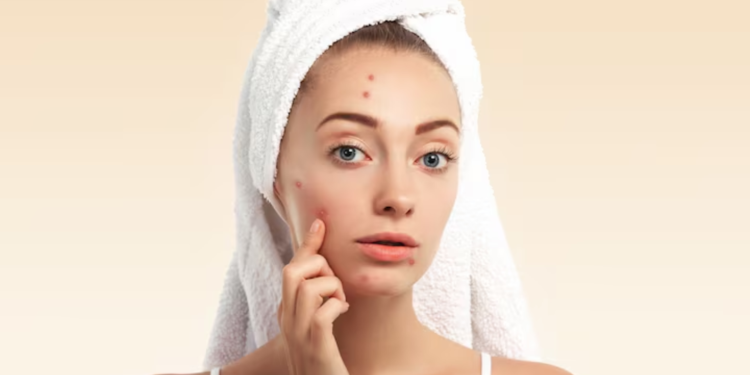Acne can be frustrating. It doesn’t matter if you’re a teenager dealing with hormonal breakouts or an adult navigating stress-related flare-ups—pimples, blackheads, and inflamed skin can impact your confidence and overall skin health. But the good news is that with a well-planned skincare routine and the best acne products, you can take back control.
In this guide, we’ll break down how to build a simple, effective anti-acne skincare routine using high-performing, natural solutions that target acne without irritating your skin.
Step 1: Start with a Gentle Face Cleanser
The first step to fighting acne is keeping your pores clean and clear. You need a gentle cleanser that removes excess oil, dirt, and impurities without drying out your skin.
Look for best acne products made with ingredients like neem, tulsi, or activated charcoal. These natural ingredients are known for their antibacterial and oil-balancing properties. A good cleanser should leave your skin feeling refreshed—not tight or irritated.
Pro Tip: Wash your face twice a day—morning and night. Over-cleansing can strip your skin’s natural barrier and trigger more breakouts.
Step 2: Use a Targeted Toner
Toning is often an overlooked step, but it’s essential in an anti-acne routine. A toner balances your skin’s pH levels and preps it for better absorption of serums and moisturizers.
Choose toners that include soothing and purifying ingredients like witch hazel, rose water, or tea tree oil. These help tighten pores, reduce inflammation, and prevent future breakouts.
Avoid alcohol-based toners—they can over-dry the skin and worsen acne.
Step 3: Apply a Lightweight Acne Serum
This is where your routine becomes more targeted. Serums are lightweight, fast-absorbing liquids that deliver concentrated ingredients directly into the skin.
Look for best acne products that contain niacinamide, salicylic acid, or turmeric. These ingredients unclog pores, reduce redness, and fade acne scars over time. A good serum works beneath the surface and prevents breakouts before they even form.
Apply the serum gently using your fingertips and allow it to fully absorb before moving on to the next step.
Step 4: Moisturize—Yes, Even Oily Skin Needs It
Many people make the mistake of skipping moisturiser when dealing with acne, especially if their skin is oily. But not hydrating your skin can lead to overproduction of oil, which can clog your pores even more.
Use a non-comedogenic, lightweight moisturizer that hydrates without making your skin greasy. Aloe vera-based formulas or ones with green tea extract are perfect for acne-prone skin.
Moisturizing keeps your skin barrier strong, helping it heal faster and stay balanced.
Step 5: Spot Treatment for Active Acne
When dealing with an active breakout, you need something extra. Spot treatments are concentrated formulas designed to reduce inflammation, kill bacteria, and shrink pimples quickly.
Some of the best acne products in this category contain clove oil, tea tree oil, or sulfur. These natural ingredients are powerful yet gentle on the skin.
Apply only to the affected area—don’t overdo it. Overuse can irritate the skin and delay healing.
Step 6: Weekly Clay Mask Detox
Once or twice a week, add a deep-cleansing clay mask to your routine. Clay masks pull out impurities from deep within the pores, reduce excess oil, and calm inflammation.
Ingredients like bentonite clay, kaolin clay, and turmeric help brighten the skin and fade acne scars too. Regular masking not only helps in keeping breakouts under control but also gives your skin a refreshed, matte look.
Step 7: Always End with Sunscreen
No matter your skin type or concerns, sunscreen is non-negotiable. UV rays can worsen acne scars and cause premature aging. Choose a broad-spectrum sunscreen with SPF 30 or more that’s specifically formulated for acne-prone skin.
Lightweight, gel-based sunscreens that don’t clog pores or leave a greasy residue are your best bet. This step seals your entire skincare routine and protects your progress.
Additional Tips to Make Your Routine More Effective
- Clean your pillowcases regularly – They collect oil and bacteria that can transfer to your skin.
- Stay hydrated – Water helps flush out toxins from your system.
- Don’t pick or pop pimples – It leads to scars and more inflammation.
- Maintain consistency – Acne treatments take time to show visible results. Stick to your routine daily.
Why Quality Matters in Anti-Acne Skincare
Not all acne products are created equal. Many over-the-counter treatments are filled with harsh chemicals that might dry out or irritate the skin. The best acne products focus on balancing, calming, and healing the skin naturally. They work with your skin—not against it.
Always check the ingredient list. If a product is packed with natural antibacterial, anti-inflammatory, and soothing components, it’s likely to work better and feel better over time.
Conclusion: Let Nature Heal Your Skin
Creating an effective anti-acne skincare routine doesn’t mean using harsh chemicals or overwhelming your skin with too many steps. Simplicity, consistency, and choosing the best acne products with natural, skin-loving ingredients is key.
For those looking for reliable, plant-powered solutions, GHAR SOAPS offers a curated collection designed specifically for acne-prone skin. Their thoughtful formulations combine traditional herbs with modern skin science, making it easier to say goodbye to acne—and hello to healthy, glowing skin.












